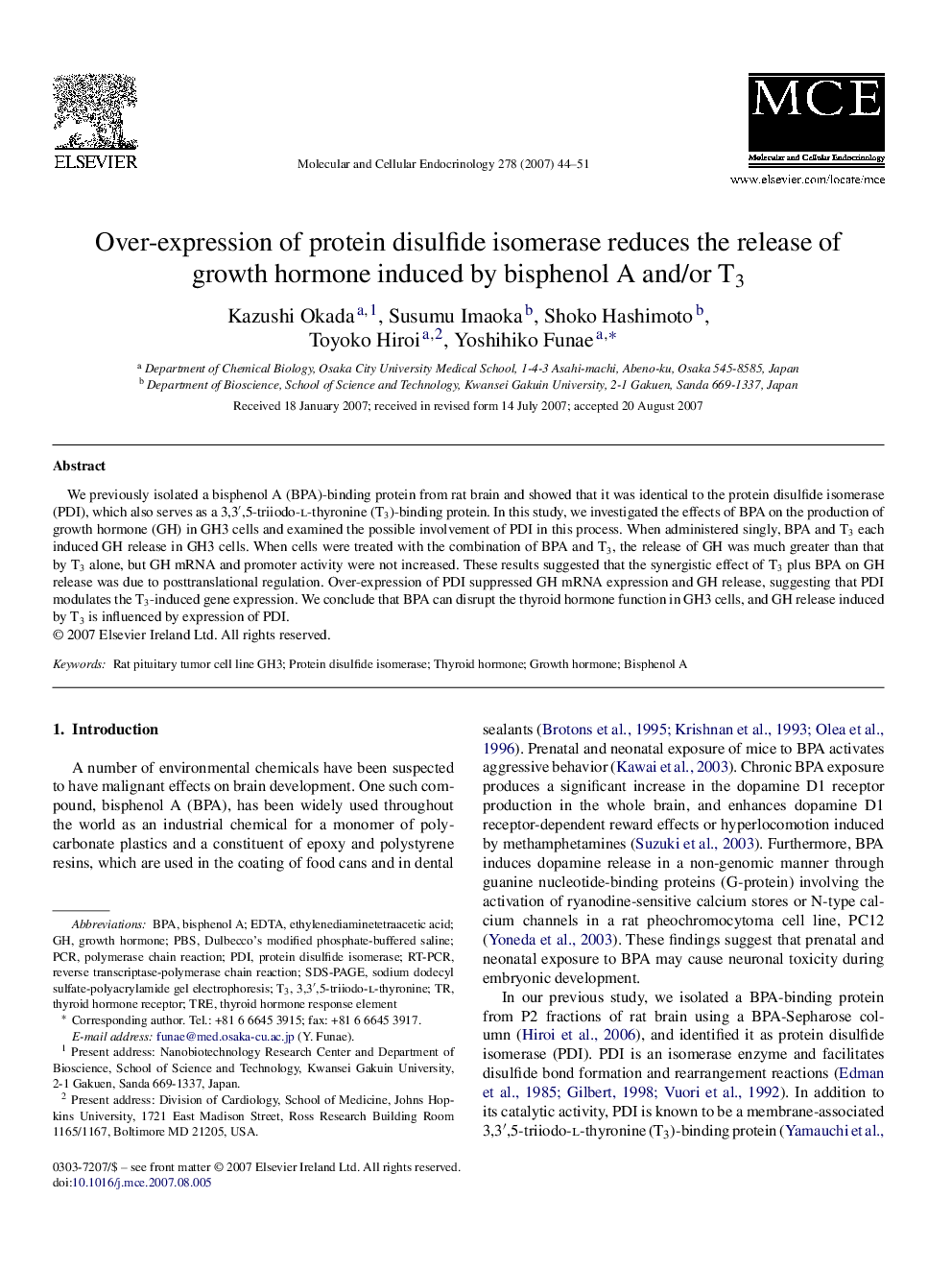| Article ID | Journal | Published Year | Pages | File Type |
|---|---|---|---|---|
| 2197806 | Molecular and Cellular Endocrinology | 2007 | 8 Pages |
We previously isolated a bisphenol A (BPA)-binding protein from rat brain and showed that it was identical to the protein disulfide isomerase (PDI), which also serves as a 3,3′,5-triiodo-l-thyronine (T3)-binding protein. In this study, we investigated the effects of BPA on the production of growth hormone (GH) in GH3 cells and examined the possible involvement of PDI in this process. When administered singly, BPA and T3 each induced GH release in GH3 cells. When cells were treated with the combination of BPA and T3, the release of GH was much greater than that by T3 alone, but GH mRNA and promoter activity were not increased. These results suggested that the synergistic effect of T3 plus BPA on GH release was due to posttranslational regulation. Over-expression of PDI suppressed GH mRNA expression and GH release, suggesting that PDI modulates the T3-induced gene expression. We conclude that BPA can disrupt the thyroid hormone function in GH3 cells, and GH release induced by T3 is influenced by expression of PDI.
